#aenocyon
Text

Fun fact: Dire wolves were actually not wolves, as a study in 2021 shows this large and very common Pleistocene dog was actually part of its own genus, Aenocyon, not Canis. Some of its modern day relatives are notable for more reddish fur and even within Canis the integument can vary quite a bit. That's why I showed the animal here not as wolf like as it is usually depicted.
534 notes
·
View notes
Text

timeline of the evolution of the dog spanning over 50~ million years 🌿
(not 100% accurate but I tried my best)
#dog#dogs#canine#paleo art#evolution#wolf#dire wolf#miacis#cynodictis#aenocyon#tomarctus#canis lupus#canis familiaris#grey wolf#timeline#extinct#extinct animals#extinct species#dog illustration#dog drawing#animal art#illustration#art#artists on tumblr#comics#doodle#illustrator#artist#digital art#animal illustration
569 notes
·
View notes
Photo

Dire Wolf (Aenocyon dirus)
Patreon • Ko-fi • Facebook • Twitter • Prints & Merch
1K notes
·
View notes
Text

Portrait of Aenocyon dirus, a canid species that terrorized much of the Americas and East Asia during the Pleistocene.
#paleoart#paleontology#aenocyon dirus#aenocyon#dire wolf#dire wolves#pleistocene#pleistocene megafauna#pleistocene north america
16 notes
·
View notes
Text
The Real Encino Man
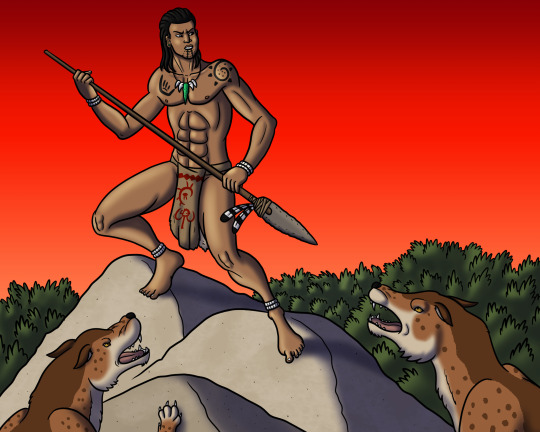
12,000 years ago in what will someday become the neighborhood of Encino in Los Angeles, California, a distant ancestor of the local Tongva people must defend himself from hungry dire wolves (Aenocyon dirus)!
This was inspired by a revisiting of the 1992 teen comedy Encino Man, which is about a couple of high school seniors accidentally uncovering a frozen prehistoric man (played by a young Brendan Fraser), thawing him back to life, and teaching him to adapt to modern life. As much as Fraser’s performance is one of the film’s highlights (along with the other characters’ colorful if not always decipherable early 90’s vocabulary), it must be admitted that anyone living in Encino during the Pleistocene would not have looked like him. More likely, they’d be related to local indigenous groups like the Tongva and Chumash.
#Encino Man#Native American#indigenous#prehistoric#dire wolves#aenocyon#pleistocene#paleoart#digital art#art
1 note
·
View note
Text
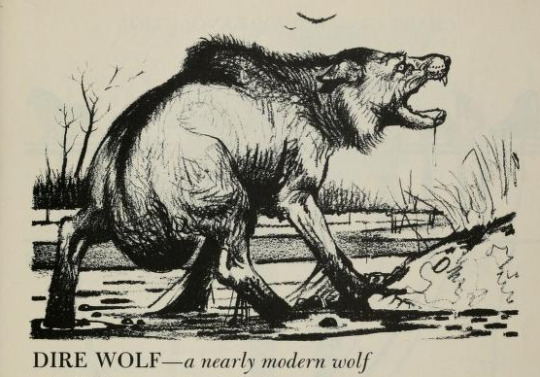
Dire Wolf. From The First Mammals, written/illustrated by William E. Scheele. 1955.
303 notes
·
View notes
Text
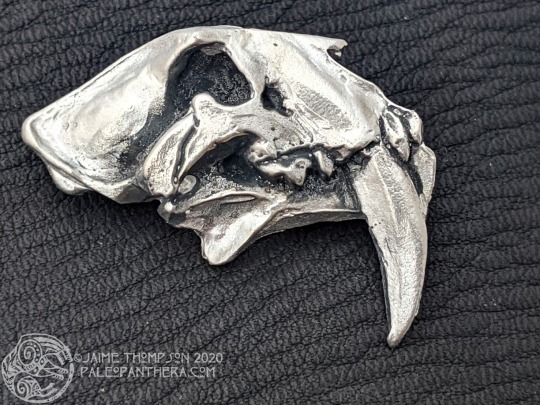

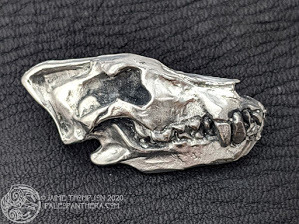

Paleo skull pins! Smilodon, cave lion (P. spelaea), dire wolf (recently discovered as a highly adapted dog not a wolf, Aenocyon dirus), and cave bear (U. spelaeus). I made these by sculpting the originals in monster clay and casting them in Britannia pewter; they each have two posts so they don't spin. They about 1.25" long and look badass on lapels. It's a pity these specific pins don't sell that well because they're one of my favorite creations.
#paleo#palaeo#palaeosinensis#paleo panthera#paleopanthera#panthera#panthera spelaea#cave lion#smilodon#sabre tooth tiger#dire wolf#canis dirus#aenocyon dirus#pewter#metalsmith#ursus spelaeus#cave bear#ice age#paleolithic#pins#handmade#art#artist#small artist#artist on tumblr
27 notes
·
View notes
Photo

Worthy Descendants by Greer Stothers.
#please don't remove credit!#queue#cat art#dire wolf#aenocyon dirus#velociraptor#science#saber tooth#illustration#cute art#animal art#dog art#puppy art#bird art
16 notes
·
View notes
Text
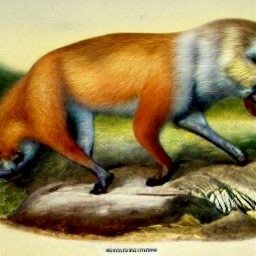

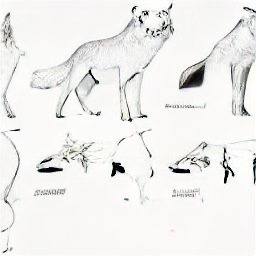
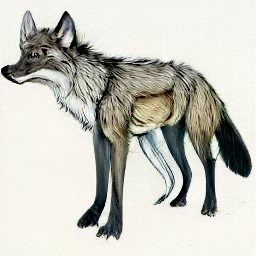
Aenocyon dirus via Craiyon
9 notes
·
View notes
Photo
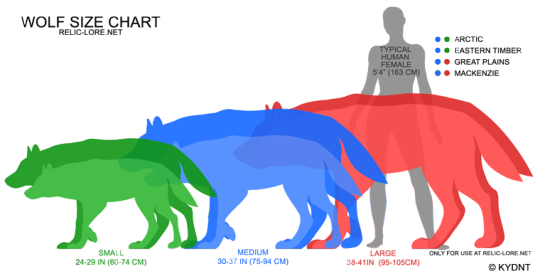

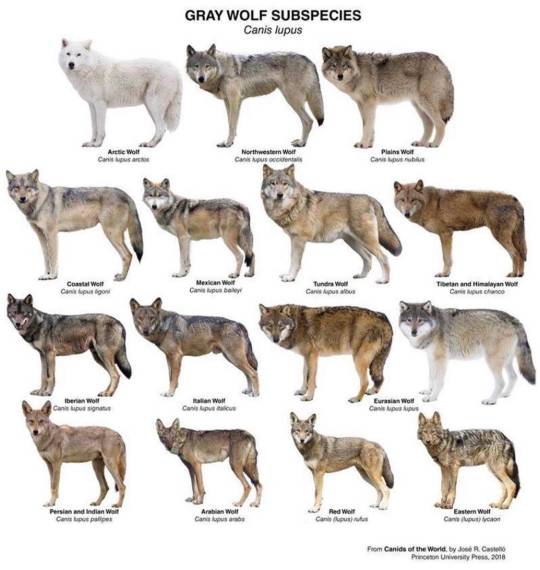

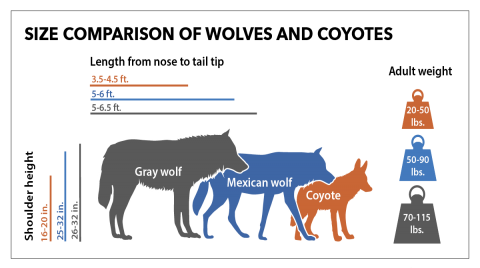

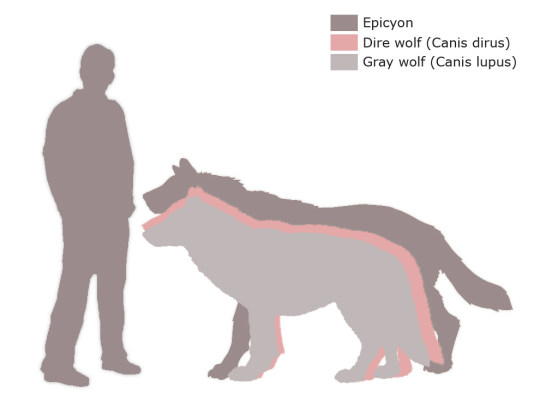
what if I uhhhhh *hyperfixates*
x x x x x x x
***pssst! remember that dire wolves (Aenocyon dirus) were only about as big as the bigger gray wolf subspecies. They were not wolves, in fact, and evolved separately in the Americas rather than Eurasia! This information is as recent as early 2021, which is why you may not have known
sources on that: x x x x x x
#i gotta stop fugckin contemplating making ANOTHER hyperfixation side blog#when the fixation recedes again it'll just go dead for awhile and then i'll contemplate deleting it like i always do!!!!!!!#wolves#aenocyon dirus#dire wolf#Iberian wolf#canis laTRANS rights 😌
9 notes
·
View notes
Text




Carnivoran skulls from the Florida Museum of Natural History:
Lesser short-faced bear (Arctodus pristinus). Became extinct around 300,000 years ago, fossils are found in high concentrations in Florida. Related to the modern spectacled bear.
Ambruster’s wolf (Canis ambrusteri). Became extinct around 250,000 years ago, found throughout the United States. Taxonomy of this species is somewhat confusing, it may be related to modern grey wolves but may also be ancestral to dire wolves (which are now placed in the genus Aenocyon).
American lion (Panthera atrox). Became extinct around 11,000 years ago, found from Canada and the United States to southern Mexico. American lions were the sister species to Eurasian cave lions and are closely related to modern lions.
Sabertooth cat (Smilodon gracilis). Became extinct 500,000, had a fairly cosmopolitan range throughout North America and parts of South America. S. gracilis is the smallest Smilodon species and is believed to be the ancestor of S. fatalis and S. popular or. Sabertooth cats are not closely related to any modern species of cat.
#natural history#paleontology#florida museum of natural history#short faced bear#extinct wolf#smilodon#sabertooth#american lion
446 notes
·
View notes
Text
okay so moth asked about breaking dawn werewolf sizes, and so here's a brief explanation as best as i can manage:

The orange wolf represents a dire wolf, or Aenocyon dirus, in comparison to an approximately 6 foot tall human. These fuckers were the biggest wolves to ever live at about 3'9 at the head.
They're also about the same size as a small werewolf. Bigger than normal wolves, but small for their species. Think Quackity Wolf from chapter three. (For reference, a Great Dane dog would be bigger than the biggest real world wolf.)
But BIG wolves? Those can easily reach the same level as the ones from Twilight, especially European werewolves because their bodies evolved to get used to more open plains than forests. You need to be smaller to get through a rainforest, for example, so Forever Wolf is bigger than, say, Missa Wolf. Meanwhile Spreen Wolf would probably be at least bear sized, if not larger (I haven't decided yet) because a lot of Argentina is kinda just. Flat. If that makes sense
(Because I'm a huge biology nerd, I've decided that Darwinian evolution applies to the supernatural.)

^ a Twilight werewolf, which would probably be Forever Wolf sized
I hope that makes sense?
75 notes
·
View notes
Text

More sketches of the Pleistocene Megafauna, from top to bottom: Aenocyon dirus, Arctodus simus, Gigantopithecus blacki, Bison latifrons and Panthera spelaea
#paleoart#paleontology#pleistocenemegafauna#pleistocene#cenozoic life#cenozoology#cenozoic#gigantopithecus#bison latifrons#short faced bear#dire wolves#dire wolf#cave lion
50 notes
·
View notes
Note
I'm scared to share Wolf Fun Facts because I'll feel stupid (or like im treating you like YOU'Re stupid) if you already knew the fact 😓 here goes nothing...
it's actually a Not wolf fun fact but in early 2021 genetic analysis suggested that the "dire wolf" may closely match gray wolves anatomically because they just so happened to both evolve that way... independently of each other.
To note: the average "dire wolf" was the same size as the bigger subspecies' of gray wolves today-- their size is greatly exaggerated in fantasy. They didn't have identical proportions to wolves however; with larger skulls, thicker necks, and smaller paws.
"Dire wolves" and ancient gray wolves were not related-- the "dire wolf" is not even of the genus Canis.
Its updated name is Aenocyon dirus, which was actually proposed but largely rejected as its name 100 years before its recent revival and acceptance, and multiple subspecies have been identified. Its closest living relatives are African jackals, and many paleoartists color and pattern Aenocyon dirus similarly due to their apparent shared niche in warm regions.
They preyed upon a few select megafauna, whereas gray wolves hunted a variety of animals that were usually not as large and were more omnivorous-- this is regarded as the reason for the skeletal (and presumably muscular) differences between the two species.
This is also regarded as one reason as to why wolves survived the ice age and Aenocyon did not-- they were better able to adapt with the mass extinction of megafauna as the last glacier period receded because they were already more flexible in their diets. Skeletal evidence demonstrates increasing malnutrition in "dire wolves" over time.
Locations and frequencies of fossils, alongside the close anatomical match, still suggest that "dire wolves" lived similar lifestyles in similar social structures to gray wolves, though in larger packs, despite differences.
Their closest common ancestor evolved in the Americas around 6 million years ago-- for reference on how far removed that ancestor is, the oldest known Aenocyon fossil is 0.25 million years old. One population migrated to Eurasia and the other remained in America. The Eurasian population came to yield the ancient gray wolves from which the modern gray wolf is descended. The American population, meanwhile, gradually gave rise to the "dire wolf".
One (1) "dire wolf" fossil has been found in Asia, suggesting that a very small population of them migrated from the American continents.
A population of the gray wolves eventually migrated to the Americas and lived in loose competition with Aenocyon until the latter went extinct.
Also, another canid called Xenocyon entered North America just before the emergence of "dire wolves" and was the same size, but their fossils on the continent are rare, suggesting Aenocyon very quickly outcompeted them. Xenocyon would later bring about dholes and African painted dogs in Eurasia and Africa.
here's to hoping you didn't know at least something here because much of it is very recent 🥂
!!! i didnt know ANY of that! woah!! convergent evolution is awesome. i always just assumed dire wolves were ancestors of grey wolves. awesome fact ty for informing me!!!! *_*
59 notes
·
View notes
Text
Cenozoic fauna poll... 2!
the last one was a lot of fun and people left great suggestions so I've made a 2nd poll (and also expanded the temporal range slightly)
Like before, the animals would have their space/habitat needs adequately met and would not be immediately at risk for genetic issues/poaching/habitat loss. Also just for funsies you can also imagine that the other members of their ecosystem would also be brought back, this is just who'd you want back first.
#fishes rambles#paleoblr#paleontology#cenozoic#extinct animals#if you saw me post this b4 with the wrong geological time period no you did not.
69 notes
·
View notes
Note
🍪 🙃 🦖 🎤
🍪: If you were a cookie, what kind would you be?
Answered here!
🙃: What’s a weird fact that you know?
In Canada, it is illegal to pretend to practise witchcraft. However, it is legal to actually practise witchcraft, magic, spells or incantations, as long as you do not do so at the expense of another person.
🦖: Favorite extinct animal?
The Aenocyon dirus, generally known as dire wolf. Yes. The same dire wolves we saw in A Song of Ice and Fire and Game of Thrones!
🎤: Is there a song you know all the lyrics to?
I know I'll be basic with my answer, but this one:
Since I tend to reblog like crazy:
ASK GAME HERE
6 notes
·
View notes